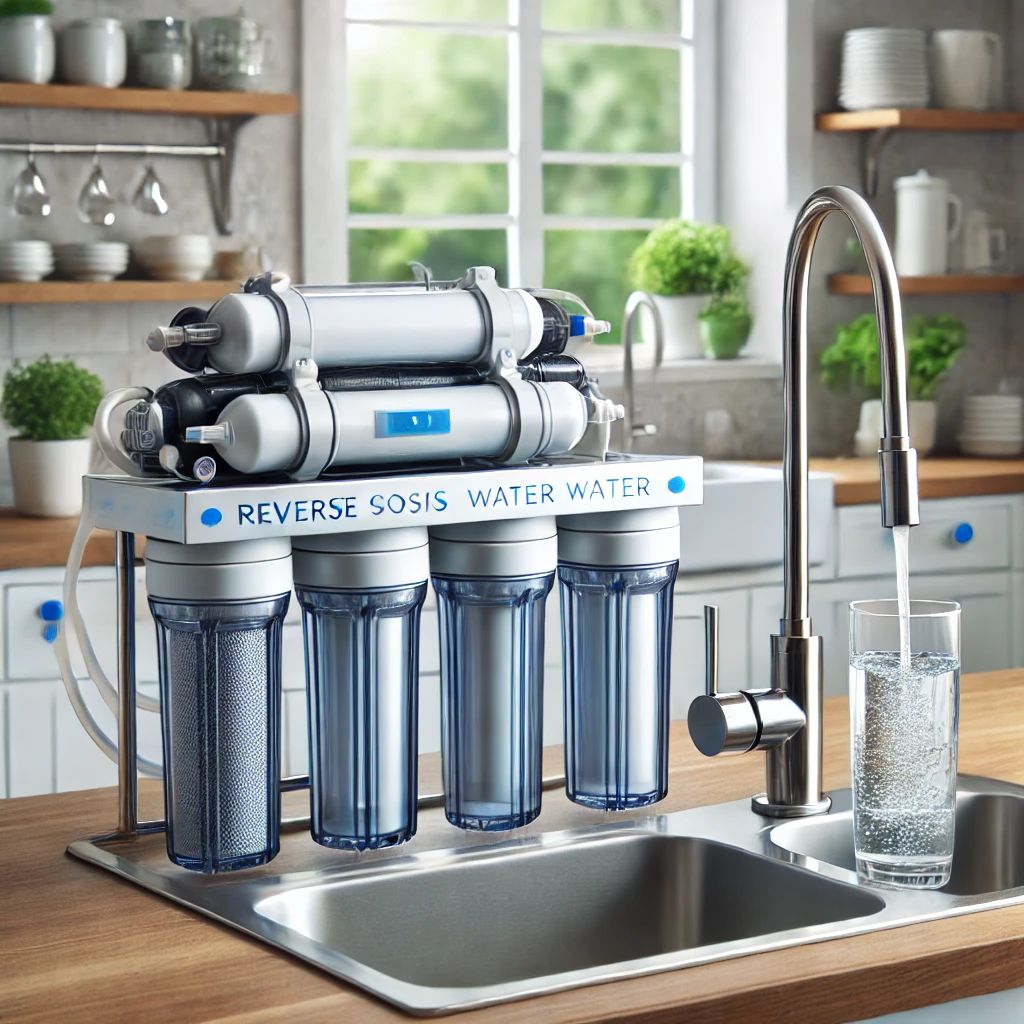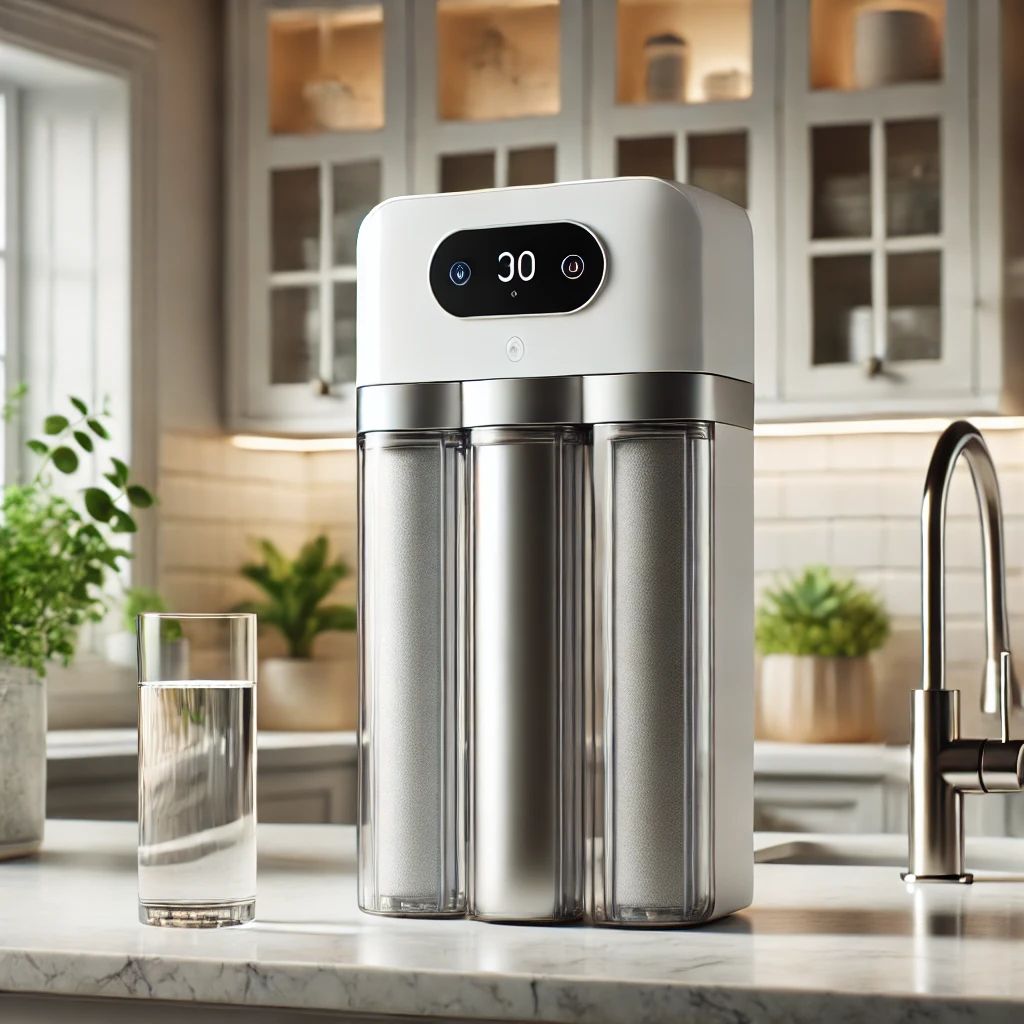What Contaminants Does Reverse Osmosis Remove from Water?
Water is an essential resource, and ensuring its purity is a top priority for many households. One of the most effective methods to purify water is through Reverse Osmosis (RO) systems. These systems are known for their ability to remove a wide range of contaminants, making water safer and better-tasting. In this blog post, we’ll explore what contaminants reverse osmosis removes from water and why it’s an essential technology for maintaining a healthy lifestyle.
Additionally, we’ll highlight the benefits of investing in the Best Reverse Osmosis Drinking Water System, making sure you understand how it can provide superior protection against common and harmful water pollutants.

How Does Reverse Osmosis Work?
Before diving into what contaminants reverse osmosis can remove, it’s essential to understand how the process works. Reverse osmosis operates by using a semipermeable membrane that filters out contaminants as water passes through it. The system exerts pressure on the water to push it through the membrane, leaving impurities behind. The result is clean, pure water that’s free from many of the harmful elements that can affect your health.
The Best Reverse Osmosis Drinking Water System typically includes multiple stages of filtration, each designed to tackle different kinds of contaminants. These systems are effective at removing both large particles like sediment and microscopic pollutants like heavy metals.
Key Contaminants Removed by Reverse Osmosis
1. Dissolved Salts and Minerals
One of the primary functions of reverse osmosis is to remove dissolved salts and minerals from the water. These are often referred to as “total dissolved solids” (TDS). While some minerals are beneficial, such as calcium and magnesium, others like sodium or chlorine can be problematic. High levels of sodium, for example, can lead to health concerns for those with high blood pressure or other cardiovascular conditions.
The Best Reverse Osmosis Drinking Water System reduces TDS levels significantly, providing water that is safe for drinking and cooking.
2. Heavy Metals
Heavy metals are some of the most dangerous contaminants found in water. These include lead, mercury, arsenic, cadmium, and chromium, all of which pose severe health risks. Prolonged exposure to these metals can lead to various health issues, such as developmental problems in children, kidney damage, and even cancer. Lead contamination, in particular, has been a significant concern in cities with aging water infrastructure.
Reverse osmosis systems are incredibly effective at filtering out heavy metals. The semipermeable membrane traps these particles, preventing them from entering your drinking water.
3. Fluoride
Fluoride is commonly added to municipal water supplies to promote dental health. However, there is a growing debate over whether fluoride in drinking water is necessary or even safe. Excessive fluoride consumption can lead to fluorosis, a condition that affects teeth and bones. For those who prefer to limit their fluoride intake, reverse osmosis is one of the few filtration systems capable of removing fluoride from water.
If you’re concerned about fluoride exposure, choosing the Best Reverse Osmosis Drinking Water System will give you peace of mind that your water is free from this additive.
4. Chlorine and Chloramine
Chlorine and chloramine are disinfectants commonly used by water treatment facilities to kill bacteria and other pathogens. While they are effective at keeping water safe from microbial contamination, they can leave an unpleasant taste and odor in the water. Moreover, long-term exposure to chlorine byproducts, such as trihalomethanes (THMs), has been linked to various health issues, including cancer.
Reverse osmosis systems remove chlorine, chloramine, and their byproducts, improving the taste and smell of your water, while also protecting you from potential health risks.
5. Pesticides and Herbicides
Pesticides and herbicides from agricultural runoff can contaminate water supplies, especially in rural areas. These chemicals, designed to kill pests and weeds, can be toxic to humans when ingested over long periods. Common contaminants include atrazine, a widely used herbicide, and glyphosate, the active ingredient in many weed killers.
Reverse osmosis systems can filter out these harmful chemicals, ensuring that your water is free from dangerous agricultural contaminants.
6. Bacteria and Viruses
Although reverse osmosis systems are not primarily designed to remove bacteria and viruses, they can reduce some microbial contaminants due to the fine filtration process. The semipermeable membrane can block many types of bacteria, protozoa, and even some viruses. However, it’s often recommended to pair an RO system with UV purification or other microbial filtration stages for optimal protection against waterborne pathogens.
7. Nitrates
Nitrates, commonly found in fertilizers, can seep into groundwater and contaminate drinking water supplies. High nitrate levels in water are particularly dangerous for infants, as they can cause a condition known as methemoglobinemia, or “blue baby syndrome,” which affects the blood’s ability to carry oxygen.
The Best Reverse Osmosis Drinking Water System can efficiently reduce nitrate levels, providing safer drinking water for your entire family.
Why You Need the Best Reverse Osmosis Drinking Water System
While there are many reverse osmosis systems available, it’s essential to choose the Best Reverse Osmosis Drinking Water System for your home. A high-quality RO system will have several filtration stages, each targeting specific contaminants. Look for systems with certifications, such as NSF/ANSI standards, which ensure the system’s efficacy in removing particular pollutants.
Benefits of the Best Reverse Osmosis Drinking Water System:
- Improved Water Taste and Odor: By removing chlorine, dissolved salts, and other contaminants, RO systems significantly enhance the taste and smell of your water.
- Protection from Harmful Contaminants: Heavy metals, pesticides, fluoride, and other dangerous pollutants are effectively eliminated.
- Cost Savings: While bottled water is a common alternative, installing an RO system is a more economical and environmentally friendly solution in the long run.
- Health Benefits: With contaminants like lead and arsenic removed, the risk of developing severe health issues from water consumption is dramatically reduced.
Conclusion
A reverse osmosis system offers one of the most comprehensive solutions for home water filtration. Whether you’re concerned about heavy metals, pesticides, or chlorine, the Best Reverse Osmosis Drinking Water System will provide you with clean, pure water that you can trust. Investing in such a system not only protects your health but also enhances your overall water experience.
If you’re looking for a reliable and effective way to ensure the quality of your drinking water, consider installing a reverse osmosis system today.








